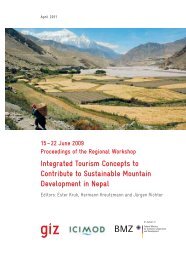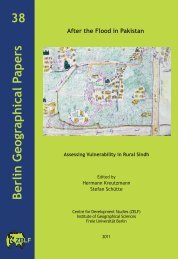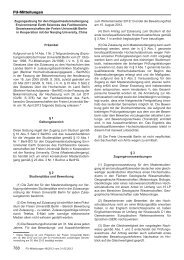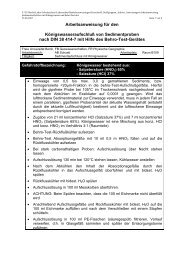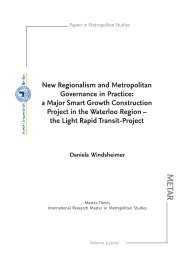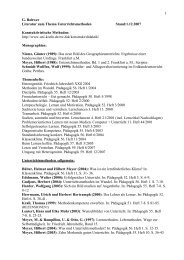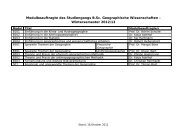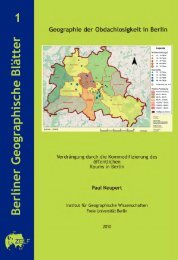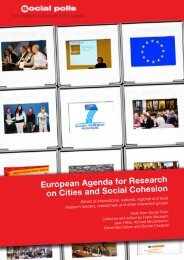Pastoralism and Rangeland Management on the Tibetan Plateau in ...
Pastoralism and Rangeland Management on the Tibetan Plateau in ...
Pastoralism and Rangeland Management on the Tibetan Plateau in ...
Create successful ePaper yourself
Turn your PDF publications into a flip-book with our unique Google optimized e-Paper software.
Holistically valu<strong>in</strong>g a complex system is nearly impossible. Valuat<strong>in</strong>g <strong>the</strong><br />
importance of pastoralism through market value or m<strong>on</strong>etary terms is difficult<br />
<str<strong>on</strong>g>and</str<strong>on</strong>g> not do<strong>in</strong>g justice to it simply because of <strong>the</strong> fact that pastoralism <strong>in</strong> its<br />
traditi<strong>on</strong>al sense was not meant for market producti<strong>on</strong> <str<strong>on</strong>g>and</str<strong>on</strong>g> that pastoralism is<br />
multipurpose <str<strong>on</strong>g>and</str<strong>on</strong>g> many roles or functi<strong>on</strong>s played by traditi<strong>on</strong>al pastoralism can<br />
not be measured by m<strong>on</strong>etary terms. Pastoral systems are more than simply a<br />
mode of livestock producti<strong>on</strong>. They are also c<strong>on</strong>sumpti<strong>on</strong> systems that support<br />
100–200 milli<strong>on</strong> mobile pastoralists globally: many more if extensive agopastoralists<br />
are <strong>in</strong>cluded (FAO 2001). They are natural resource management<br />
systems that provide a wide range of services <str<strong>on</strong>g>and</str<strong>on</strong>g> products that are nati<strong>on</strong>ally<br />
<str<strong>on</strong>g>and</str<strong>on</strong>g> globally valued, such as biodiversity, tourism <str<strong>on</strong>g>and</str<strong>on</strong>g> raw materials. Scholars<br />
(Hatfield et al. 2006) have tried to assess <strong>the</strong> importance of pastoralism by tak<strong>in</strong>g<br />
<strong>in</strong>to its direct values, <strong>in</strong>direct values, opti<strong>on</strong>al values <str<strong>on</strong>g>and</str<strong>on</strong>g> existence values.<br />
Ano<strong>the</strong>r dimensi<strong>on</strong> to <strong>the</strong> values of pastoralism is that <strong>the</strong> major resources<br />
exploited by pastoralists, that is, <strong>the</strong> rangel<str<strong>on</strong>g>and</str<strong>on</strong>g>s are often marg<strong>in</strong>al resources<br />
under harsh c<strong>on</strong>diti<strong>on</strong>s that cannot be used by c<strong>on</strong>venti<strong>on</strong>al agriculture.<br />
<str<strong>on</strong>g>Pastoralism</str<strong>on</strong>g> is a socio-ecological mode of culture (Scholz 2008). It represents<br />
a cultural adaptati<strong>on</strong> to marg<strong>in</strong>al envir<strong>on</strong>ments, characterized by climatic uncerta<strong>in</strong>ty<br />
<str<strong>on</strong>g>and</str<strong>on</strong>g> low-grade resources, <str<strong>on</strong>g>and</str<strong>on</strong>g> complies with <strong>the</strong> ecological pr<strong>in</strong>ciples<br />
of rangel<str<strong>on</strong>g>and</str<strong>on</strong>g> ecosystems. It is <strong>the</strong> f<strong>in</strong>ely-h<strong>on</strong>ed symbiotic relati<strong>on</strong>ship between<br />
local ecology, domesticated livestock <str<strong>on</strong>g>and</str<strong>on</strong>g> people <strong>in</strong> resource-scarce <str<strong>on</strong>g>and</str<strong>on</strong>g> highly<br />
variable regi<strong>on</strong>s, often at <strong>the</strong> thresholds of human survival. It represents a<br />
complex form of natural resource management, <strong>in</strong>volv<strong>in</strong>g <strong>the</strong> direct <strong>in</strong>teracti<strong>on</strong>s<br />
between three systems <strong>in</strong> which pastoral people operate, i.e. <strong>the</strong> natural<br />
resource system, <strong>the</strong> resource use system <str<strong>on</strong>g>and</str<strong>on</strong>g> <strong>the</strong> larger geo-political system<br />
(Pratt et al. 1997).<br />
For development agencies <str<strong>on</strong>g>and</str<strong>on</strong>g> policy-makers to support pastoralists, it is important<br />
to keep <strong>in</strong> m<strong>in</strong>d that:<br />
(1) pastoralism represents a way of life show<strong>in</strong>g how to make a survival under<br />
harsh c<strong>on</strong>diti<strong>on</strong>s by explor<strong>in</strong>g marg<strong>in</strong>al <str<strong>on</strong>g>and</str<strong>on</strong>g> heterogeneous resources that can<br />
not be o<strong>the</strong>rwise used, but pastoral way of life itself is far from satisfactory <str<strong>on</strong>g>and</str<strong>on</strong>g><br />
usually does not provide a quality way of life;<br />
(2) pastoral use of rangel<str<strong>on</strong>g>and</str<strong>on</strong>g>s is more compatible to ecological c<strong>on</strong>servati<strong>on</strong><br />
objectives than most o<strong>the</strong>r l<str<strong>on</strong>g>and</str<strong>on</strong>g> uses of rangel<str<strong>on</strong>g>and</str<strong>on</strong>g>s; especially, many rangel<str<strong>on</strong>g>and</str<strong>on</strong>g>s<br />
are n<strong>on</strong>-equilibrial systems exhibit<strong>in</strong>g high variability <strong>in</strong> primary productivity<br />
<str<strong>on</strong>g>and</str<strong>on</strong>g> opportunistic <str<strong>on</strong>g>and</str<strong>on</strong>g> extensive pastoral use proves to be far more susta<strong>in</strong>able<br />
<str<strong>on</strong>g>and</str<strong>on</strong>g> envir<strong>on</strong>mentally friendly than cultivated agriculture; we should <strong>the</strong>refore<br />
not hold <strong>the</strong> view that pastoralism is “outdated” or someth<strong>in</strong>g that needs to be<br />
70



